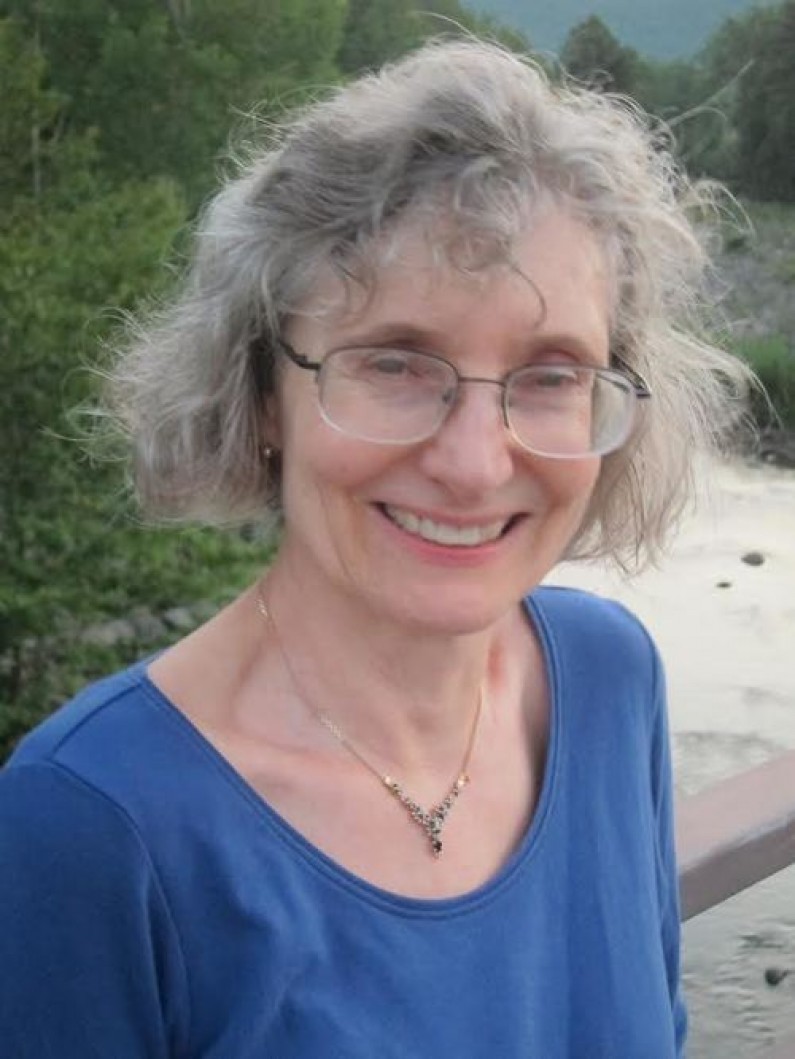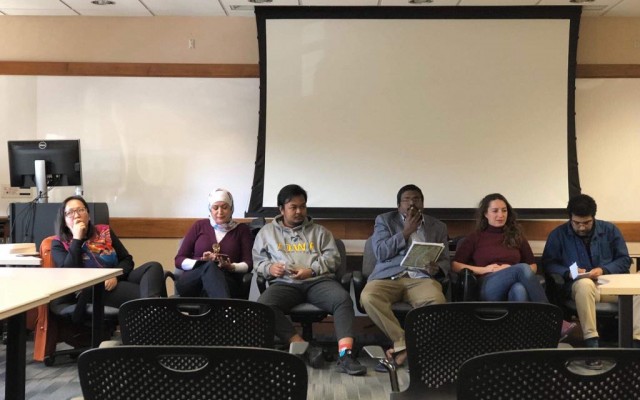Teaching Translation: Rosanna Warren

Teaching Translation is a series of interviews with translators who also teach. This second interview features poet, translator, essayist, biographer, and scholar Rosanna Warren. A translator from Italian, French, Ancient Greek, and Latin, she was Ida Beam Visiting Professor at the University of Iowa in fall 2017 and is currently a professor in the Committee on Social Thought at the University of Chicago.
How would you describe the translation classes you teach?
For many years I taught the Translation Seminar at Boston University, a combination of seminar and workshop for graduate students and advanced undergraduates. We had an intense, three-hour session on Mondays, with discussion of a theoretical text followed by a workshop on the week’s translation exercise. Each Friday featured a presentation by a visiting translator, to make sure that the students saw that there is a vast variety of approaches to literary translation. These Friday sessions were open to the public, and brought in eminent translators from many languages and eras. Since I taught this class for 25 years, the list is too long to remember, but our guests included Esther Allen (Spanish), Clare Cavanagh (Polish), Robert Fagles (Greek), Robert Fitzgerald (Latin), Rachel Hadas (Modern Greek), Seamus Heaney (Irish), Michael Henry Heim (Czech, German, Hungarian, etc. !), David Hinton (Chinese), Richard Howard (French), Donald Keene (Japanese), Galway Kinnell (French), Rika Lesser (Swedish), Mark Strand (Spanish). I edited an anthology of some of the best of these presentations, The Art of Translation: Voices from the Field (Northeastern University Press, 1989). When I left Boston University, my colleagues in the Department of Comparative Literature adopted the program and have carried it on brilliantly. I believe they plan to expand it.
Sometimes people say creative writing can’t be taught. Do you think that’s true of translation?
No, I don’t believe it’s true. You can’t wave a wand and turn people into gifted writers, but people can turn themselves into writers by immersing themselves in good literature, and classes in translation create a context where that can happen in a focused way. Many educated people are remarkably naïve about translation: they simply haven’t thought about it, and can be surprised by the immense differences between translations, and by the array of choices a translator faces at every word. A class in translation lets people study a history of such choices, and of the theories and cultural conditions that inspire them. It also allows them try for themselves (always the key to real learning), and wrestle with the inevitable despairs and sacrifices the art requires.
What role does translation theory play in your classroom? How about the practice of translation—what translation exercises do you have your students practice?
I should emphasize that I’m not teaching translation in an organized way these days at the University of Chicago. But I do continue to work with individual students on projects in translation. When I taught the Translation Seminar at Boston University, what might be called “theory”—centuries of principled thinking about translation—played an enormous role in the class, everything from the letters of Saint Jerome to Dryden, Franz Rosenzweig, the inevitable Walter Benjamin, Eugene Nida, to William Arrowsmith, Roger Shattuck, and Lawrence Venuti, to mention only a few. But in my classes, abstract concepts are always tested against the practical work of translating, and against a practical criticism arising from those exercises and longer projects.
Exercises: for the first seven weeks, I gave students a set of texts, prose and poetry, to translate from languages I work with: Ancient Greek, Latin, Italian, and French. They also studied, each week, an array of different translations of these texts, and had to come up with their own versions and discuss them in the workshop. In the second half of the course, students began working on ambitious projects of their own choosing, and if that involved languages I don’t know (as they often did), they found faculty mentors in those languages. Each student presented a portion of the independent project to the rest of the class in workshop.
How has teaching informed your own translation work? Has teaching translation helped you discover things about your own translation practice?
I’m sure teaching affected my own practice as a translator, by jostling me out of bad habits and making me even more painfully aware than usual of the possible pitfalls and misapprehensions.
What’s the first thing you try to impress upon your students when they come into your classroom?
What the great Italian poet and novelist Cesare Pavese called “questa amorosa simpatia”: this loving sympathy. One must be motivated by something resembling love—though sometimes a conflictual love—for the text one is translating. One must mobilize one’s whole consciousness and as much of one’s unconscious as one can reach: translation must involve the whole thinking, feeling being. It’s not an academic exercise. And the related point I try to get across—it’s more a vision than a “point”—is that translation is an art. One must bring to it one’s intimacy with the language and literature of the language from which one translates, as well as with the language into which one translates. One must have an artistic conscience, and deep sense of responsibility to the literary achievements in those languages. One is making a work of art to stand beside other works of art.
What is the first assignment you give your students?
When I taught the seminar in translation, my first assignment was always Sappho’s famous poem, “Phainetai moi ” (“He seems to me a god…”) because it’s such a dramatic lyric, so passionate, so emotionally complex that students are immediately engaged with it; and because it provides a perfect lesson in syntax, stanzaic form ( the Sapphic stanza), quantitative meter, diction, and poetic concreteness. I always followed up the next week with Catullus’s Latin version (“Ille me par”) and Catullus’s other poem in Sapphic meter, “Furius and Aurelius…” In my experience, these poems are so powerful that even people who think they hate (or are indifferent to) poetry get excited about them.
What do your students find the most difficult?
It depends on the student. Too hard to answer. A lot depends on each student’s literary background: how familiar each one is with a range of styles, a range of works, the deep resources of language. For some students, the foreign language itself presents difficulties. For others, it’s becoming more sensitive to literary style.
People come to literary translation for many different reasons. What are some common reasons in your classes?
Many (though by no means all) of the students in the class at Boston University were enrolled in the MFA Program, and wanted to become better writers by learning to translate. Most of them seemed to find that by apprenticing themselves intensely to a foreign author, they did indeed improve their own writing. Others came with scholarly interests, and wanted to understand the foreign works they were studying by feeling them from the inside out.
Do you think it’s possible to fully evaluate a translation from a language you don’t know?
No. And I say this with compunction, having served on a number of juries for literary translation. One judges the quality of the English, but then it’s important to check with specialists for basic accuracy and also for a larger sense of the stylistic features in the author’s work, and its cultural context.
How has the way you teach translation changed since you first started?
Teaching has enlarged my sense of the enormous variety of ways of translating, the multiple richnesses to be found in different approaches. I don’t think I was dogmatic to begin with, but any dogmatisms I started with have eroded. I try to bring to the work of other translators a sense of discovery, of wonder.
Image: Courtesy of Rosanna Warren, by Joel Cohen


